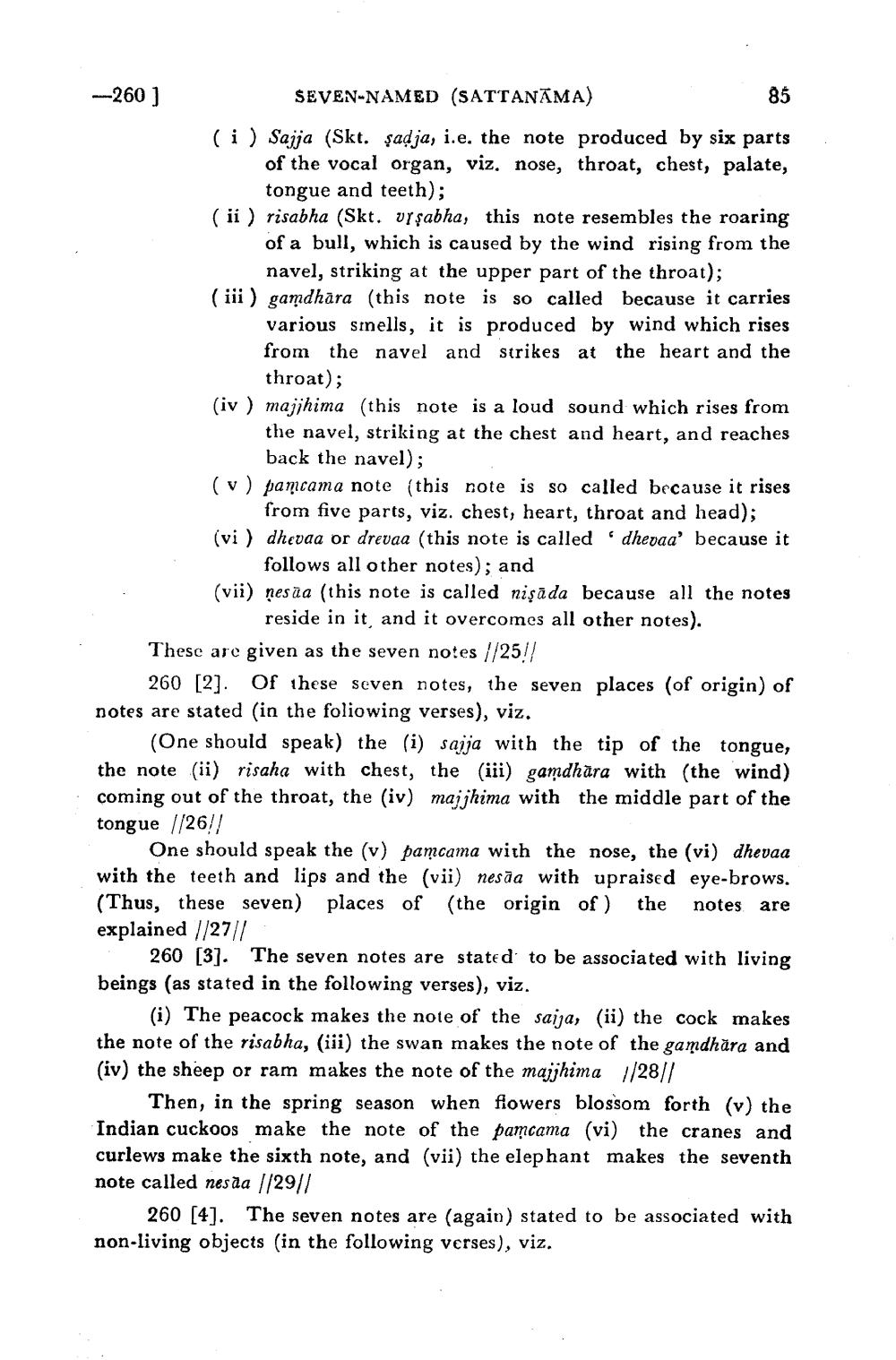________________
-260]
SEVEN-NAMED (SATTANAMA)
85
(i) Sajja (Skt. şaḍja, i.e. the note produced by six parts of the vocal organ, viz. nose, throat, chest, palate, tongue and teeth);
(ii) risabha (Skt. vɣşabha, this note resembles the roaring of a bull, which is caused by the wind rising from the navel, striking at the upper part of the throat); (iii) gamdhara (this note is so called because it carries various smells, it is produced by wind which rises from the navel and strikes at the heart and the throat);
(iv) majjhima (this note is a loud sound which rises from the navel, striking at the chest and heart, and reaches back the navel);
(v) pamcama note (this note is so called because it rises from five parts, viz. chest, heart, throat and head);
(vi) dhevaa or drevaa (this note is called dhevaa' because it follows all other notes); and
(vii) nesua (this note is called nişada because all the notes reside in it, and it overcomes all other notes).
These are given as the seven notes //25!!
260 [2]. Of these seven notes, the seven places (of origin) of notes are stated (in the foliowing verses), viz.
(One should speak) the (i) sajja with the tip of the tongue, the note (ii) risaha with chest, the (iii) gamdhara with (the wind) coming out of the throat, the (iv) majjhima with the middle part of the tongue //26//
One should speak the (v) pamcama with the nose, the (vi) dhevaa with the teeth and lips and the (vii) nesia with upraised eye-brows. (Thus, these seven) places of (the origin of) the notes are explained //27/|
260 [3]. The seven notes are stated to be associated with living beings (as stated in the following verses), viz.
(i) The peacock makes the note of the saija, (ii) the cock makes the note of the risabha, (iii) the swan makes the note of the gamdhara and (iv) the sheep or ram makes the note of the majjhima 1/28/1
Then, in the spring season when flowers blossom forth (v) the Indian cuckoos make the note of the pamcama (vi) the cranes and curlews make the sixth note, and (vii) the elephant makes the seventh note called nesta ||29||
260 [4]. The seven notes are (again) stated to be associated with non-living objects (in the following verses), viz.




